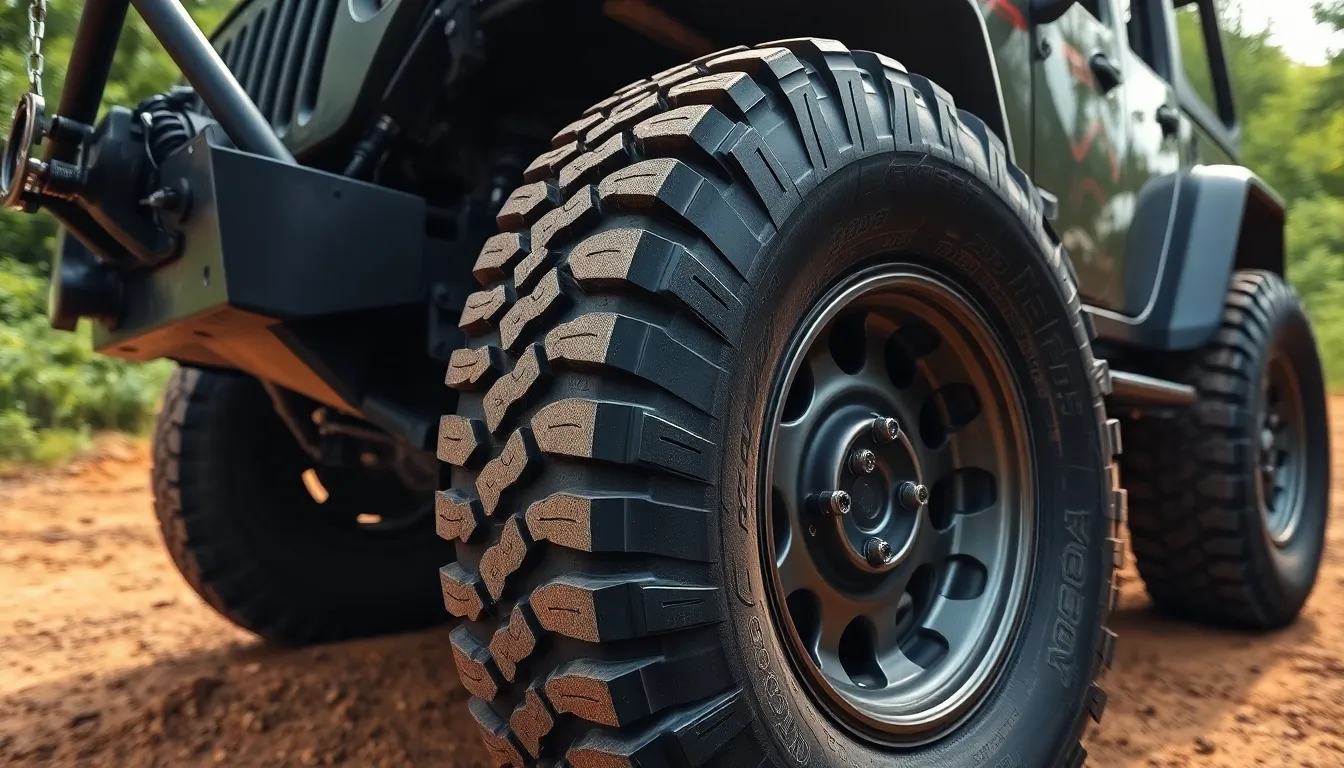When we’re shopping for new tires or trying to understand our current setup, deciphering tire size numbers can feel overwhelming. The “305” marking you’ve spotted on a tire sidewall isn’t just a random number – it’s a crucial measurement that tells us exactly how wide that tire is.
This three-digit number represents the tire’s width in millimeters from sidewall to sidewall. Understanding what a 305 tire means helps us make informed decisions about performance, fitment, and whether it’s the right choice for our vehicle. Whether we’re upgrading to wider tires for better grip or simply replacing worn rubber, knowing these measurements is essential.
We’ll break down everything about 305-width tires, from their exact dimensions to which vehicles they typically fit. By the end of this guide, we’ll have the knowledge to confidently navigate tire shopping and understand exactly what we’re getting with these wide performance tires.
What Does 305 Mean in Tire Sizing
The number 305 represents the tire’s width measurement in millimeters from sidewall to sidewall. We measure this dimension at the tire’s widest point when it’s properly mounted and inflated on the recommended rim width.
Key measurements for 305 tire width:
| Measurement | Value | Description |
|---|---|---|
| Width in millimeters | 305 mm | Sidewall to sidewall distance |
| Width in inches | 12.01 inches | Converted measurement |
| Typical rim width range | 10.5-12.0 inches | Compatible wheel sizes |
Our tire sizing system follows a standardized format where the first number always indicates width. This 305mm measurement translates to approximately 12 inches making it one of the wider tire options available for passenger vehicles and light trucks.
Common 305 tire applications include:
- Performance sports cars requiring maximum contact patch
- Heavy duty pickup trucks needing load carrying capacity
- Off road vehicles demanding enhanced traction
- Racing applications where grip takes priority
The 305 width designation appears as the first number in the complete tire size marking such as 305/35R20 or 305/70R16. Each complete size string tells us the width (305mm) along with additional specifications like sidewall height ratio and rim diameter.
We find 305 width tires provide increased ground contact area compared to narrower options. This expanded footprint delivers improved traction for acceleration braking and cornering but typically reduces fuel economy due to increased rolling resistance.
Breaking Down the 305 Tire Size Code
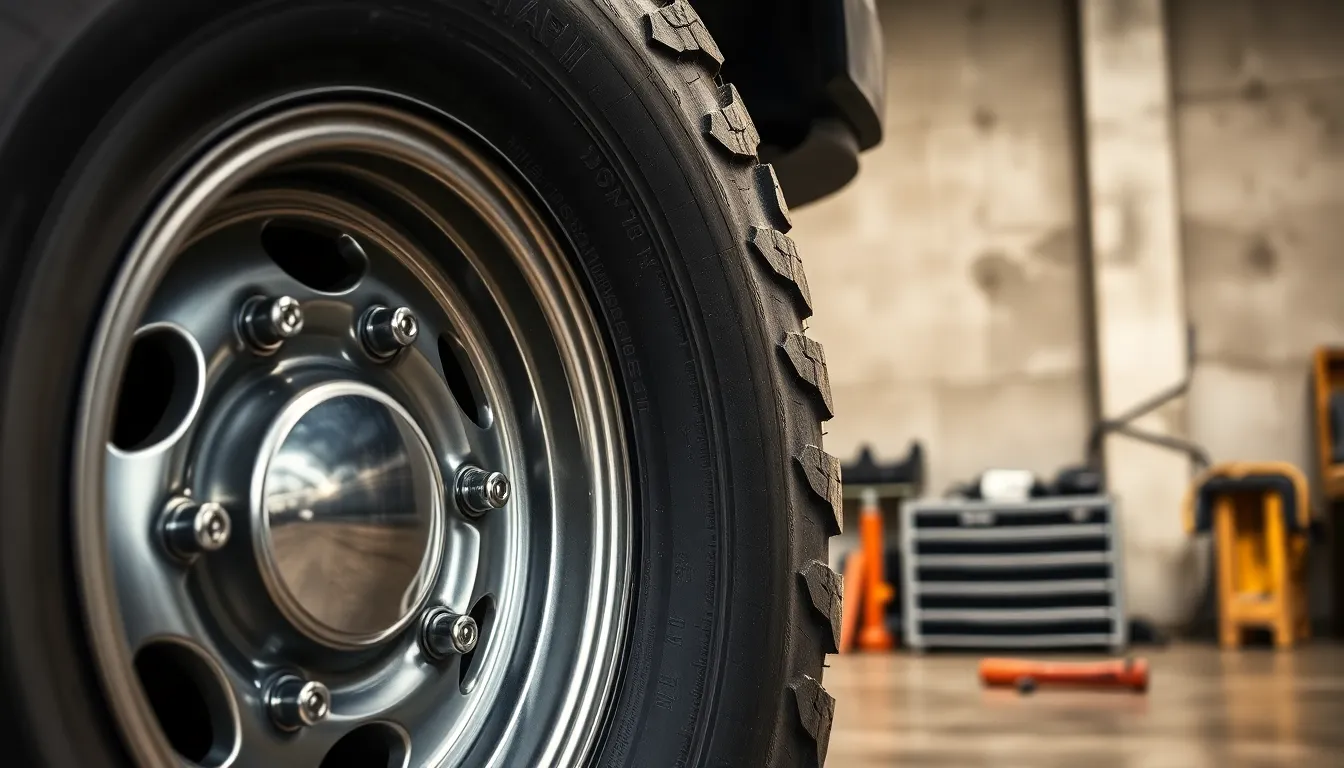
Understanding each component of a tire size code helps us make better purchasing decisions. Each number and letter in the 305 tire designation carries exact technical meaning that affects vehicle performance and compatibility.
Width Measurement in Millimeters
The number 305 indicates the tire’s width measures exactly 305 millimeters across its widest point. This measurement equals approximately 12 inches when converted to standard units. Manufacturers measure this width from sidewall to sidewall when the tire sits properly mounted and inflated to recommended pressure specifications.
Aspect Ratio and Sidewall Height
The aspect ratio appears as the second number in complete tire codes like 305/70R18 or 305/50R20. This percentage represents the sidewall height compared to the tire’s total width. A 305/70R18 tire features a sidewall height of 214 millimeters (8.4 inches), calculated as 70% of the 305mm width. Lower aspect ratios like 50 create shorter sidewalls measuring 153 millimeters (6 inches), providing different handling characteristics and ride quality.
Wheel Diameter Compatibility
The final number specifies the wheel diameter in inches that accommodates the tire. A 305/70R18 tire fits exclusively on 18-inch diameter wheels measuring 457.2 millimeters across. Different wheel sizes require corresponding tire variations such as 305/50R20 for 20-inch wheels measuring 508 millimeters in diameter. The “R” designation confirms radial construction, which represents the standard tire building method for modern vehicles.
Common Vehicles That Use 305 Tires

Multiple vehicle categories benefit from the enhanced traction and stability that 305-width tires provide. Understanding which vehicles commonly use these wider tires helps drivers make informed decisions about tire upgrades or replacements.
Trucks and SUVs
Larger trucks and SUVs represent the primary market for 305 tires due to their weight requirements and off-road capabilities. The 305/70R16 size appears frequently on pickup trucks where drivers demand superior traction for rugged terrain performance. Heavy-duty vehicles benefit from the increased ground contact area that 305 millimeter width provides, particularly when hauling loads or handling challenging surfaces.
Off-road enthusiasts choose 305 tires for their enhanced grip during rock crawling, mud traversing, and sand driving adventures. The wider footprint distributes vehicle weight more effectively, reducing ground pressure and improving flotation on soft surfaces. Many truck owners upgrade to 305/70R17 configurations to achieve the optimal balance between off-road capability and on-road handling characteristics.
Performance and Sports Cars
High-performance vehicles occasionally use 305 tires in specialized applications where maximum grip takes priority over fuel economy. Racing applications frequently employ 305-width tires on rear axles to maximize acceleration and cornering performance. Sports cars equipped with powerful engines benefit from the increased traction surface that 305 millimeter width delivers during hard acceleration and aggressive cornering maneuvers.
Track-focused vehicles often run staggered setups featuring 305 tires on drive wheels while maintaining narrower fronts for steering precision. Professional racing series commonly specify 305 tire widths for categories requiring extreme performance capabilities. The enhanced contact patch allows performance vehicles to transfer more power to the pavement while maintaining stability during high-speed driving scenarios.
305 Tire Size Variations and Options
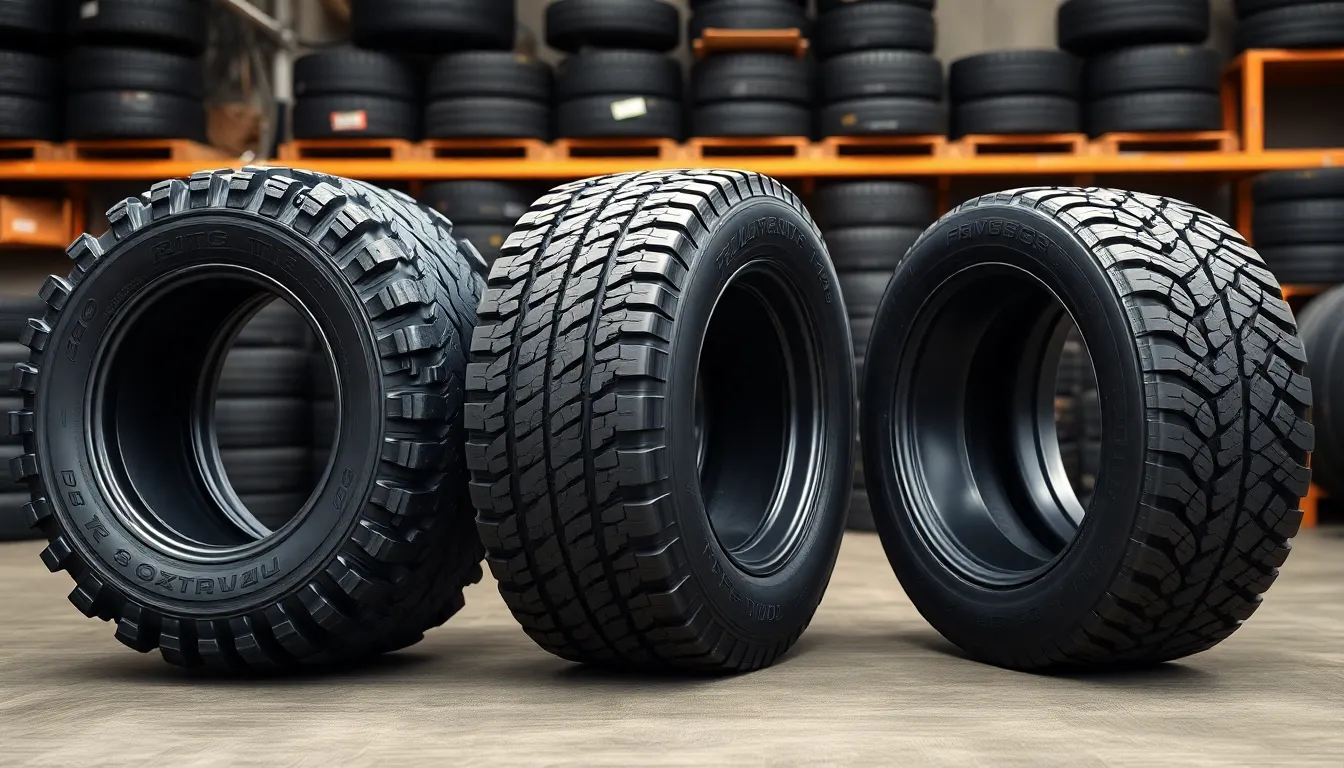
305 tires come in many configurations that serve different vehicle types and driving conditions. Each configuration combines the 305-millimeter width with exact aspect ratios and wheel diameters to create distinct performance characteristics.
Popular 305 Tire Configurations
We encounter three primary 305 tire configurations across different vehicle categories. The 305/55R20 size appears frequently on trucks and large SUVs where ground clearance and load capacity take priority. Off-road and all-terrain applications commonly use 305/70R18 tires that provide enhanced sidewall height for better shock absorption over rough terrain.
Performance and sports cars typically mount 305/35R20 tires that deliver lower sidewall profiles for improved handling precision. Racing applications often favor these lower-profile configurations because they reduce sidewall flex during aggressive cornering maneuvers.
| Configuration | Primary Application | Sidewall Profile |
|---|---|---|
| 305/55R20 | Trucks and Large SUVs | Medium Profile |
| 305/70R18 | Off-Road Vehicles | High Profile |
| 305/35R20 | Performance Cars | Low Profile |
Load Index and Speed Rating Considerations
Load index numbers and speed rating letters appear after the basic tire size designation in formats like 305/45R18 110Y. The numerical load index (110 in this example) indicates maximum weight capacity that each tire can safely support when properly inflated. Speed ratings use alphabetic codes where Y represents the maximum safe sustained speed for that exact tire construction.
Different manufacturers assign varying load indexes and speed ratings to their 305-width tires based on internal construction methods and intended applications. Performance tires often carry higher speed ratings like W or Y while truck tires typically feature lower speed ratings but higher load indexes. We recommend consulting manufacturer specifications rather than assuming identical ratings across different 305 tire models since construction materials and design philosophies vary significantly between brands.
Heavy-duty applications require careful attention to load index values because insufficient load capacity can cause premature tire failure or dangerous blowouts under normal operating conditions.
Performance Characteristics of 305 Tires
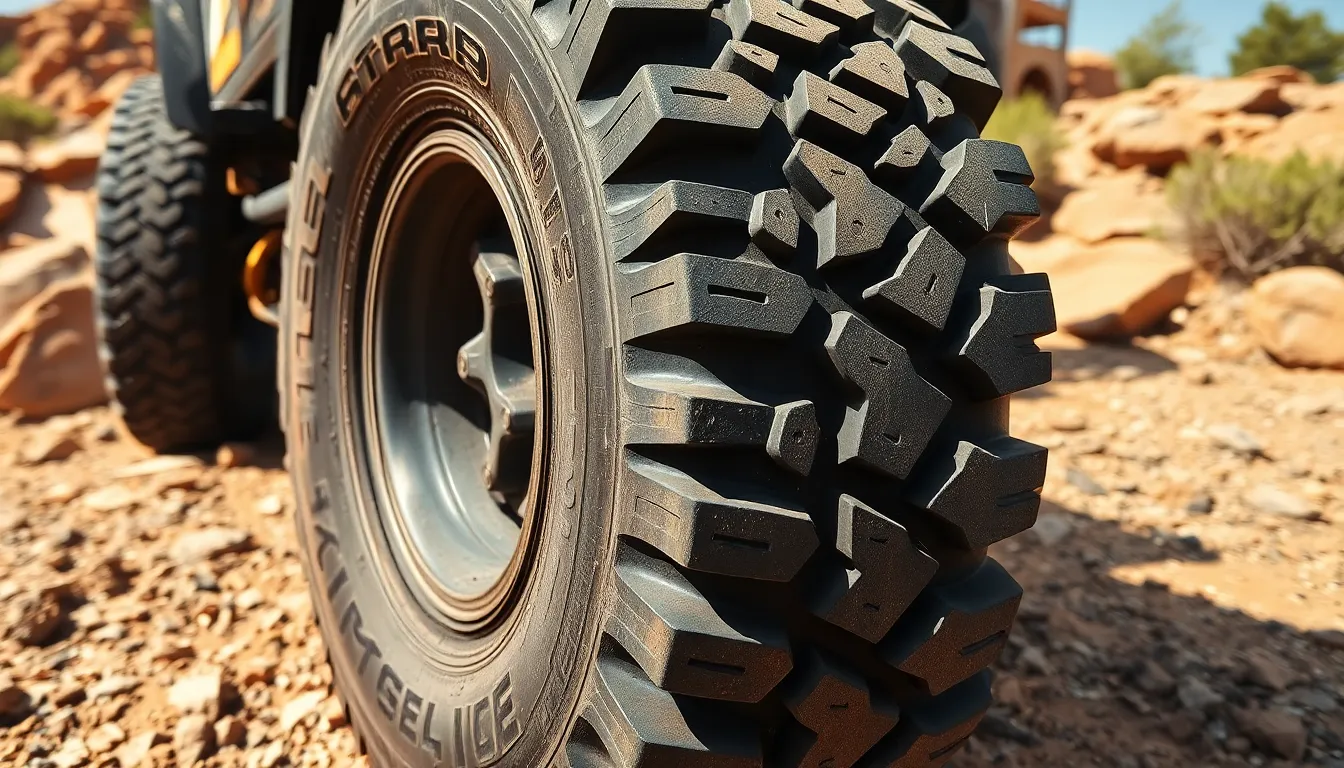
Performance characteristics define how 305 tires behave on the road and impact your driving experience. Understanding these traits helps make informed decisions about tire selection for exact vehicle applications.
Traction and Handling Benefits
Wider contact patches create superior traction capabilities with 305 tires compared to narrower alternatives. The 12-inch width distributes vehicle weight across more surface area, generating increased friction between tire and pavement. Enhanced grip translates to improved handling performance, particularly on rough or slippery surfaces where maximum contact becomes critical.
Cornering stability increases dramatically due to the expanded footprint that 305 tires provide. Acceleration performance benefits from the additional grip area, allowing vehicles to transfer power more effectively to the road surface. Braking distances often decrease because the larger contact patch creates more friction for stopping power.
Off-road traction receives important improvements from 305 tire widths. Rocky terrain, mud, and loose surfaces provide better purchase with the increased surface area. Performance vehicles use these benefits for racing applications where maximum grip determines competitive advantage.
Fuel Economy Impact
Rolling resistance increases with 305 tire widths, directly affecting fuel consumption rates. The larger contact patch creates more friction with road surfaces, requiring additional engine power to maintain speed. Fuel economy typically decreases by 2-5% compared to narrower tire options due to this increased resistance.
Highway driving experiences the most noticeable fuel consumption changes with 305 tires. City driving may show less dramatic differences because of frequent stopping and starting patterns. Vehicle weight and engine efficiency influence the actual fuel economy impact, with heavier trucks showing different patterns than lighter sports cars.
Tire pressure maintenance becomes more critical for fuel efficiency with 305 widths. Underinflated wide tires create excessive rolling resistance, compounding fuel consumption issues. Regular pressure monitoring helps minimize the fuel economy penalties associated with 305 tire installations.
Choosing the Right 305 Tire for Your Vehicle
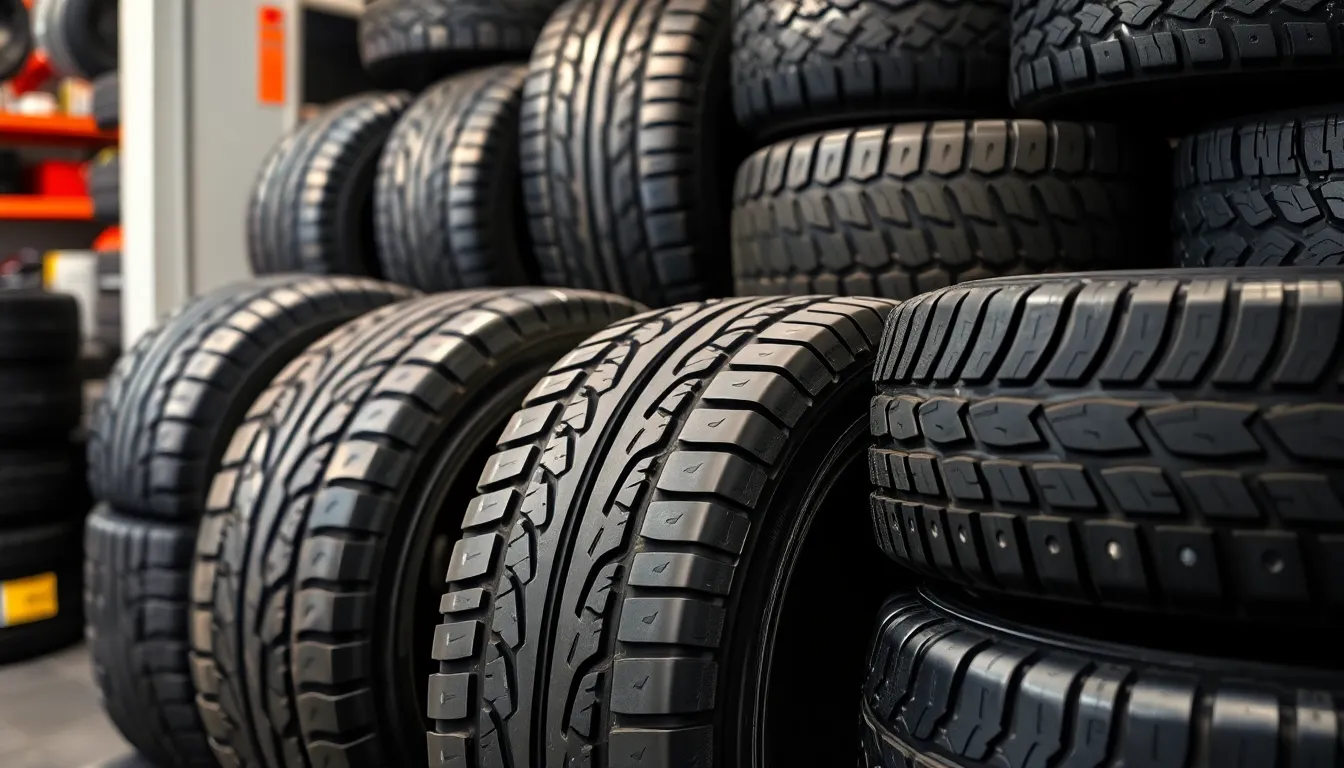
Selecting the appropriate 305 tire requires careful consideration of your vehicle’s specifications and intended use. Vehicle compatibility remains the primary factor, including wheel well clearance and suspension constraints that affect proper fitment.
All-Season vs Specialty Tires
All-season 305 tires deliver balanced performance across dry, wet, and light winter conditions, making them ideal for daily driving scenarios. These versatile options provide consistent traction throughout most weather patterns while maintaining reasonable tread life and comfort levels.
Specialty tires optimize performance for exact conditions but often sacrifice versatility in the process. Off-road 305 tires feature aggressive tread patterns and reinforced sidewalls for rocky terrain and mud traction. Summer performance models maximize dry grip and handling precision through softer rubber compounds and specialized tread designs. Winter specialty tires incorporate deeper grooves and siping patterns for enhanced snow and ice traction.
Your typical driving conditions determine the most suitable tire category. Daily commuters benefit from all-season reliability, while recreational off-roaders require specialized tread patterns for challenging terrain. Performance enthusiasts prioritize maximum dry traction over comfort and longevity considerations.
Brand and Model Recommendations
Leading tire manufacturers offer proven 305-size options across multiple performance categories. BFGoodrich All-Terrain T/A KO2 delivers robust off-road performance with enhanced sidewall durability for extreme terrain applications. Michelin Defender LTX M/S provides exceptional all-season capability with extended tread life ratings for daily driving needs.
Falken Wildpeak A/T3W combines all-terrain versatility with superior wet traction performance through advanced silica compound technology. Each manufacturer’s offerings target exact vehicle requirements and driving preferences.
Fitment verification remains essential before purchasing any 305 tire model. Consult your vehicle’s owner’s manual or manufacturer guidelines to confirm proper wheel size compatibility and avoid interference with suspension components, fenders, or brake systems. Recent user reviews and professional ratings provide valuable insights into real-industry performance characteristics for exact tire models.
Conclusion
Understanding that a 305 tire measures 305 millimeters in width empowers you to make confident tire purchasing decisions. We’ve covered how this measurement integrates with aspect ratios and wheel diameters to create different performance profiles for various vehicle types.
Whether you’re upgrading your truck for off-road adventures or selecting performance tires for enhanced handling 305-width options offer distinct advantages. Remember that proper fitment verification remains essential before making your final purchase.
We recommend consulting your vehicle’s specifications and considering your exact driving needs when choosing among the various 305 tire configurations available in today’s market.
Frequently Asked Questions
What does the number 305 mean on a tire?
The number 305 indicates the tire’s width in millimeters. When properly mounted and inflated, a 305 tire measures 305 millimeters (approximately 12 inches) across its tread. This measurement is part of the standardized tire sizing system and appears as the first number in tire size markings like 305/35R20 or 305/70R16.
What vehicles commonly use 305-width tires?
305-width tires are commonly used on larger trucks, SUVs, high-performance sports cars, and off-road vehicles. Pickup trucks often use sizes like 305/70R16 for enhanced traction on rugged terrain. Performance cars may use 305 tires on rear axles for maximum acceleration and cornering grip, while heavy-duty vehicles benefit from their increased load capacity.
How do 305 tires affect fuel economy?
305 tires typically reduce fuel economy by 2-5% compared to narrower tires due to increased rolling resistance. The wider contact patch creates more friction with the road surface, requiring more energy to maintain speed. Maintaining proper tire pressure and choosing quality tires can help minimize the fuel efficiency impact during highway driving.
What are the most common 305 tire size configurations?
The three most common 305 tire configurations are 305/55R20 for trucks and large SUVs, 305/70R18 for off-road vehicles, and 305/35R20 for performance cars. Each combines the 305mm width with different aspect ratios and wheel diameters to create distinct performance characteristics suited to specific driving conditions and vehicle requirements.
What performance benefits do 305 tires provide?
305 tires offer superior traction and handling due to their wider contact patch with the road. This enhanced grip improves acceleration, braking performance, and cornering stability. The increased surface area provides better traction in various conditions, making them ideal for performance driving, off-road applications, and heavy-duty vehicle requirements.
How do I know if 305 tires will fit my vehicle?
Check your vehicle’s wheel well clearance, suspension constraints, and manufacturer specifications before purchasing 305 tires. Verify compatibility with your current wheel diameter and ensure adequate space for the wider tire profile. Consult your owner’s manual or tire professional to confirm proper fitment and avoid clearance issues with fenders or suspension components.

